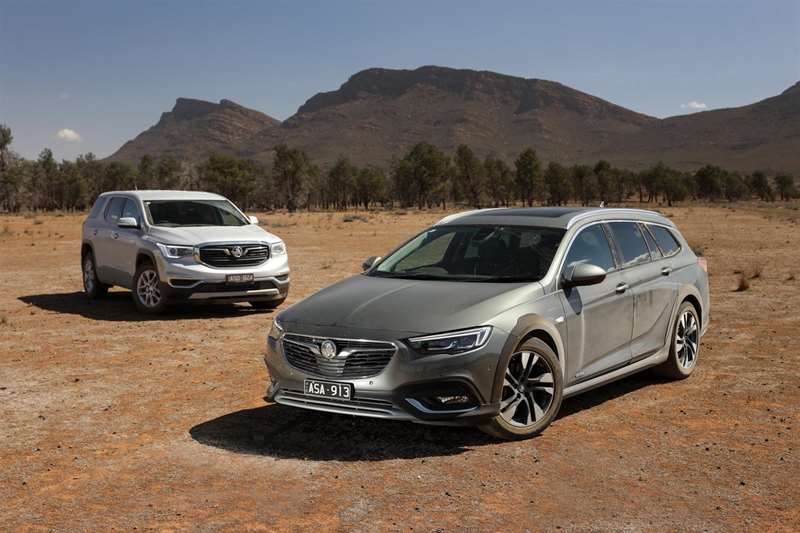No longer on top of the sales charts in Australian and New Zealand, Holden has come up with a bold new sales plan, writes Richard Bosselman.
‘‘We’re a challenger brand and we’ll need to do things that epitomise what a challenger brand would do to re-establish ourselves in the marketplace.’’
This from Holden boss David Buttner summarises how General Motors’ Australian operation is feeling after taking a significant hit in 2018, more so across the Tasman than here.
Sales on its home turf dropped 32.7% last year, a far larger market share slump than the 9.4% decline felt here. It was a humbling experience for a brand born in 1949 and that, until 2015, was a top-three performer in Australia.
The lion is wounded, yet its intent to stay in the fight was made clear when the brand brought several New Zealand journalists to its testing ground at Lang Lang, 90 minutes from Melbourne, to unveil its comeback strategy.
The ‘‘Commodore car company’’ era is now firmly in the rear-view mirror. Moving forward, the emphasis has moved to sports utility vehicles, with five models — the Trax, Equinox, Acadia, Trailblazer and the Commodore Tourer — the central focus of a massive media campaign.
The Colorado ute is also there, in spirit. The only Holden sold in New Zealand to increase its year-on-year market share in 2018, the Colorado has more sales growth in it, the company contends.
New Zealand market-specific data wasn’t released at the event, but Buttner and Kristian Aquilina, who until last year ran Holden New Zealand but has returned to Australia to take over transtasman marketing, believe growth of at least 9% is possible this year.
Expectation that 70% of sales will come from SUVs will make 2019 the first year in which sales in that category eclipse those of Holden’s conventional passenger vehicles.
The ‘‘This is how we SUV’’ campaign is all talk, unsupported by pricing or specification tweaks. It’s purely to convince the public of the quality of the product: another reason for being at Lang Lang, the brand’s proving ground for 60 years, was to drive the vehicles on the test roads — from rutted dirt tracks to the high-speed bowl.
Aquilina says the work at Lang Lang to prepare the vehicles for Australasian conditions separates the brand from every other available in here.
‘‘We’re the only brand that wakes up every morning to make the drive better for Australia and New Zealand.’’
Improved are the US market Acadia and the Equinox, with us since last January yet still an unknown to many due to customers being swayed by Holden’s aggressive stock clearance programme for the Captiva.
Speculation about Opel returning to the Australian and perhaps New Zealand markets has further eroded consumer confidence in Holden and will be a body blow to ZB Commodore, one of the big losers in the first year since Holden ended vehicle production across the Tasman.
‘‘The product we get out of Opel is still under the umbrella of GM . . . they might be different ownership, but the product is still theirs.’’
Speculation about Holden is nothing new and is probably unavoidable given last year’s performance, Buttner says.
However, he says there is no reason to think General Motors doesn’t fully back Holden.
The reality that Holden was no longer at the top of the Australian sales charts has not been easy to accept, but a mind shift to admitting that Holden was now a ‘‘challenger brand’’ has allowed the company to do things very differently.
‘‘It’s never an easy thing to do, but it’s the first, most important step’’.
Buttner has five key strategies to re-establish Holden’s standing and to ensure its sustainability.
One is to continue to leverage Holden’s relationship with General Motors — the sourcing point for the Equinox (a Chevrolet) and Acadia (GMC).
Holden also aims to leverage the passion many Kiwis and Australians have for the brand, and explain what the brand is today and what it stands for. Part of that is connecting with consumers and providing them with better products that satisfy their needs.
It also intends ‘‘to engage very, very deeply’’ with the dealer network, stressing that the relationship is a symbiotic partnership that requires both parties to thrive if they are to survive.
And finally, it plans to ensure that its line-up reflects the changing face of the automotive market.










